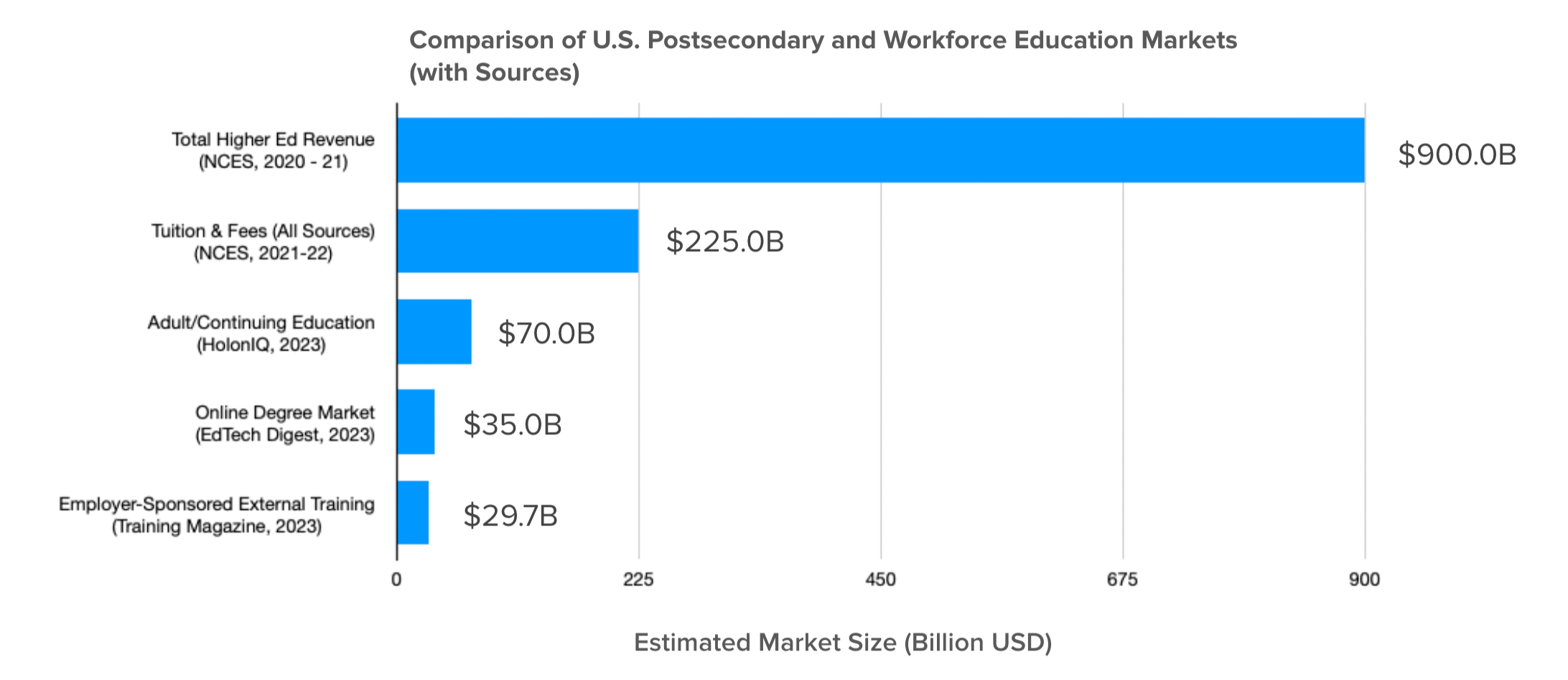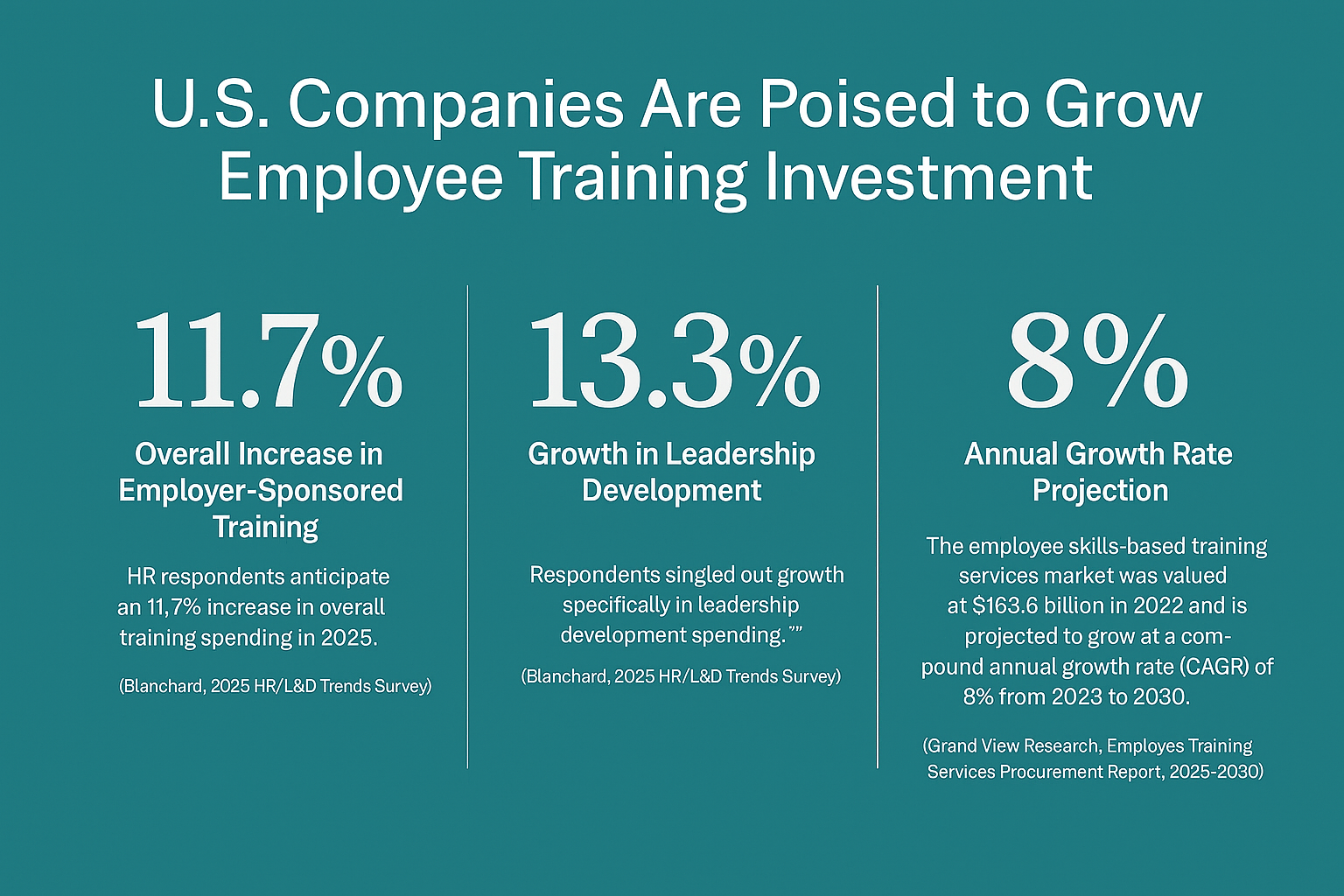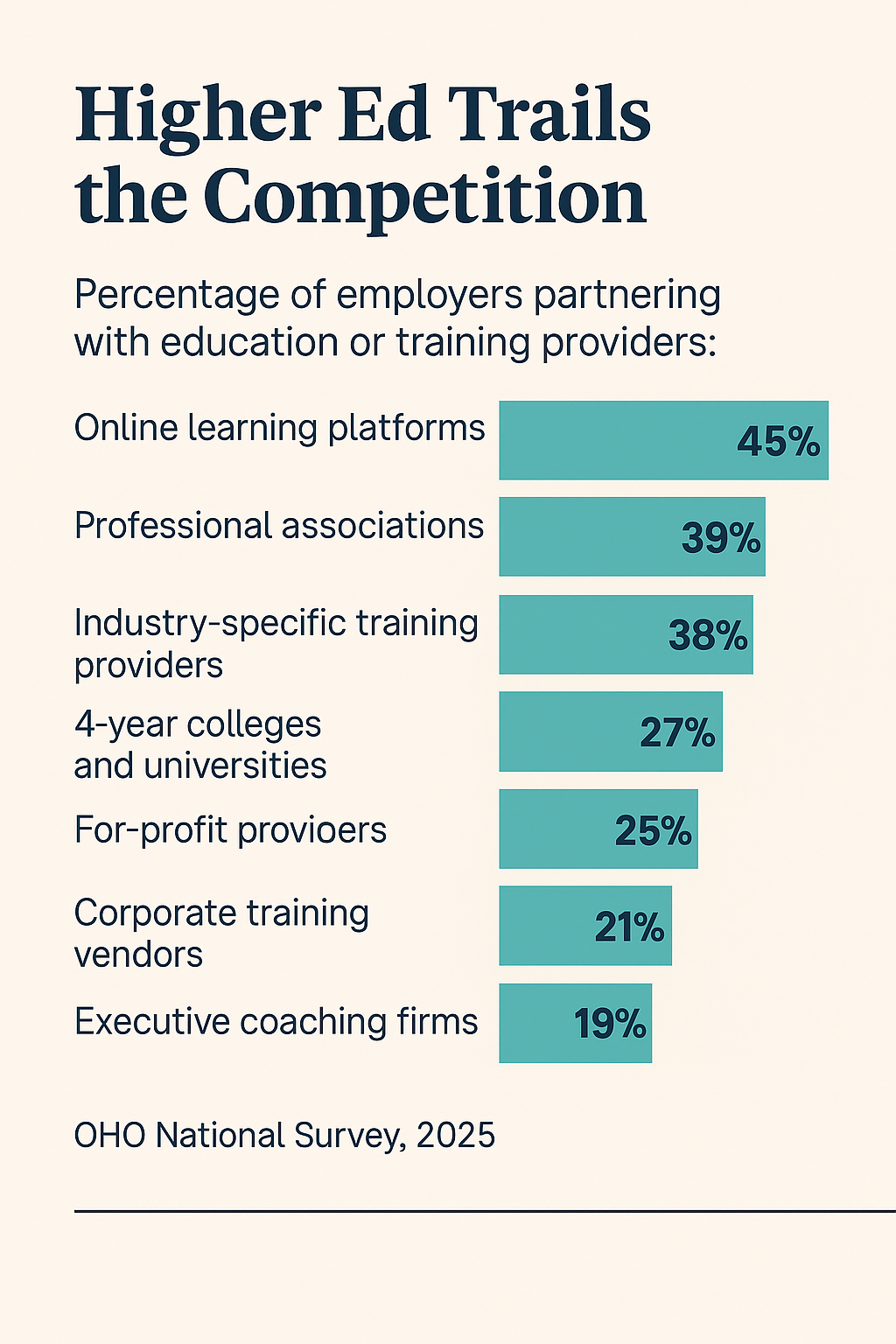Why Higher Ed Is Overlooking One of Its Most Valuable Audiences
Despite a surge in workforce training investment, most colleges and universities are still focused on individual students—overlooking the HR teams, learning officers, and business leaders driving billions in education spending. Drawing from research I conducted through interviews and surveys over the past year, this article explores how higher ed can better serve this overlooked audience—and compete in one of the fastest-growing segments of the education market.
The Market Potential Is Vast
Employer-funded education now accounts for $30–35 billion annually, making up nearly 15% of total U.S. higher ed tuition revenue. It rivals the size of the online degree market and is half as large as the adult and continuing education sector.
As companies invest more heavily in retention strategies, leadership pipelines, and equitable access to advancement, the opportunity for colleges and universities is enormous — if they know how to seize it.
The Employee Education & Training Market Is Only Getting Bigger
Training budgets aren’t just holding steady — they’re expanding.
11.7% projected growth in overall employer investment in training (2025)
13.3% growth in leadership and management programs
There is a long-term shift underway, and higher ed is in danger of being left behind if it doesn't move quickly.
Higher Ed Isn’t Competing Alone — And It’s Falling Behind
One of the most sobering insights from the survey was just how often colleges are being bypassed altogether.
Employers reported turning to:
Online platforms (45–52%)
Professional associations (39–44%)
Industry-specific training providers (38%)
Only 33% said they turn to a college or university website first when exploring options.
These alternatives win because they are:
Faster to implement
Easier to navigate
Aligned with workplace needs
Less burdened by institutional complexity
Most Colleges and Universities Are Missing the Mark with Employers.
It’s not that their programs lack value. It’s that their messaging, digital experience, and infrastructure are built for traditional students — not for the HR leaders, learning officers, and department heads who increasingly hold the budget and decision-making power.
To better understand this growing market, I created and led a national research project for OHO. I designed the survey, identified key audiences, and analyzed responses from over 100 HR professionals across sectors including healthcare, education, government, and nonprofit.
The findings were clear — and too important not to share more broadly. This article shares what I learned through that research, and offers strategic insights for how higher education can better serve — and win — this fast-growing audience.
The Disconnect: Colleges Are Marketing to Students, Not Employers
Institutional marketing is still geared toward individual learners. But in the world of employer-sponsored education, the buyer is often in HR, Learning & Development, or the leadership within individual departments.
These HR professionals are looking for:
Solutions to retention and burnout
Programs aligned with workforce goals
Skill-building at scale, with measurable ROI
Instead, most higher ed websites offer academic jargon, vague value props, and few pathways for employers to engage directly.
The Employee Often Starts the Conversation
One of the most important (and often overlooked) insights from the research was this: In many cases, it’s the employee who discovers the program — not the employer.
That means program pages must serve two audiences at once:
The employee asking: “Is this right for me — and will my company pay for it?”
The employer asking: “Does this program align with our needs — and is it worth the investment?”
Most institutions aren’t making that dual journey easy. What seems to be the problem? According to the survey:
“Making sense of course descriptions.”
“Colleges could be more transparent in the options and pricing.”
What Employers Actually Want (In Their Own Words)
Across industries and regions, the message was consistent. Most employers aren’t necessarily looking for degrees — they’re looking for alignment, flexibility, and impact.
Relevance and clarity
“Teach real world experience.”
“Finding [a program] that is effective with a good return on investment.”
Accessibility and fit
“Colleges need more program delivery options so they can fit our schedule better.”
“Provide night classes, job-specific trainings, and conferences.”
Support and speed
“Support staff who can help turnkey.”
“Have a dedicated person explaining what they can do for our employees.”
There Is Hope
Here’s the good news: employers want to work with higher ed. But they need institutions to meet them halfway.
OHO Survey results showed:
40–45% of HR leaders have already partnered with a college for custom training
80% of those partnerships began with an RFP
That means they’re actively looking — but they’re expecting clarity, speed, and responsiveness.
“If colleges offered courses tailored specially to our needs… they’d have life-long clients.”
What Colleges Can Do — Starting Now
On Every Program Page:
Speak directly to working professionals
Include information about employer sponsorship
Provide downloadable talking points or ROI summaries
Clearly list schedule, delivery format, and job relevance
Create a “Business Partners” Portal:
A centralized space for HR, L&D, and DEI leaders
Use cases by industry or talent goal
Options for off-the-shelf and custom programs
Real-world stories and an actual contact person
Final Thought: This Isn’t a Side Market — It’s the Future
Colleges don’t have to reinvent themselves. But they do have to get better at:
Serving both employees and employers
Competing with more nimble providers
Designing content and infrastructure for partnership, not just enrollment
The demand is here. The market is growing. And the institutions that adapt will lead.
Let’s Keep the Conversation Going
If you’ve made it this far — thank you. Shoot me a note, share your ideas, or ask a question. I’d love to hear your perspectives.
You can reach me at jimdalglish@mac.com or connect with me on LInkedIn.
Jim Dalglish, Director of UX Research & Strategy
About the Author
Jim Dalglish is a strategist and researcher who helps organizations turn complexity into clarity. He specializes in qualitative insight, user experience, and the responsible use of AI in research. He’s worked across sectors — from education and healthcare to SaaS and the arts — and is passionate about making data more human.
When he’s not building GPTs or synthesizing interviews, you’ll probably find him writing plays, sailing his sailboat, or walking the Cape Cod coastline.




